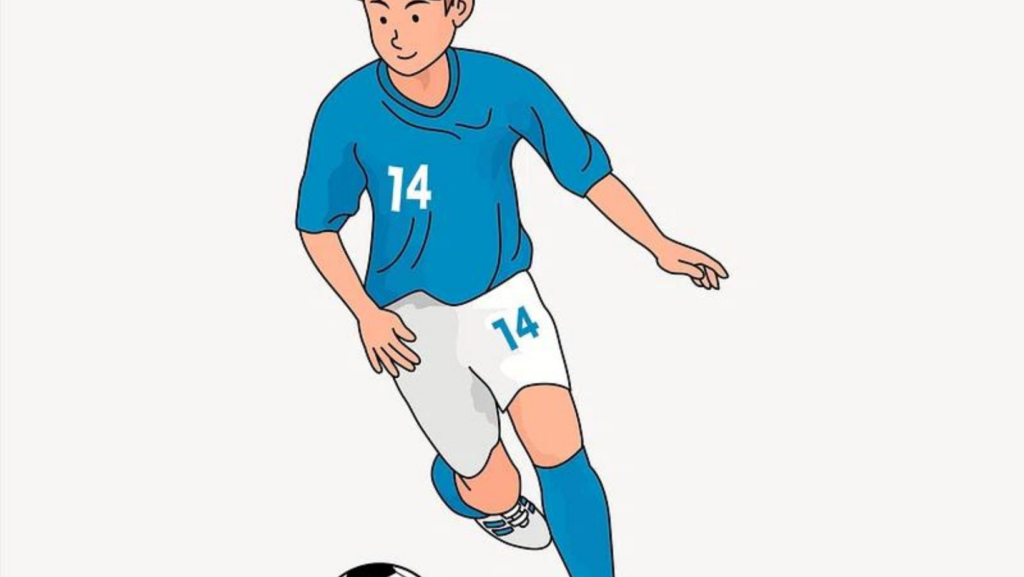
In the digital age, visual content is king. Among the many forms it takes, clip art holds a special place, especially when it comes to sports themes. And what’s more popular than football? The universal language of clip art football is a fascinating topic that’s about to be tackled.
This article is set to be a touchdown, providing valuable insights about the intersection of art, sport, and digital media. Stay tuned as we kick off this exciting discussion about clip art football.
Clip Art:znpubculd5o= Football
Diving deeper into the topic, we uncover the roots of clip art football and its widespread uses in today’s design arena and media sector.
Popular Uses in Design and Media

Clip art football isn’t merely decoration on a page or screen. Rather, it plays a critical role in various domains. Designers frequently incorporate it into websites and digital marketing materials to capture the attention of football enthusiasts. Teachers harness the power of these graphic elements in educational resources to make learning more interactive, specifically in sports education lessons. Even media outlets, from newspapers to television, employ clip art football to add visual appeal to stories or introduce sports segments.
Types of Clip Art Football Styles
Cartoon-Based Styles
Clip art football adopts the distinctive vibrance and simplicity of cartoons, giving life to football-related elements with a lively, engaging aura. Artists design these pieces, often exaggerated with large eyes or flowing movement, to capture viewers’ attention instantly, just like mascots do during games. This style is a favorite among teachers who seek to create interactive lesson materials, as it appeals to children’s heightened sense of imagination, making learning both fun and effective.
Realistic Graphics
Realism enters the sphere of clip art football through the realistic graphic style. It mirrors the intricate details of real-life football, capturing everything from the rugged texture of the football to the intricate thread patterns. These designs are commonly seen boosting the visual graphics on sports news outlets and enhancing marketing materials by adding a layer of authenticity and professionalism.
How to Choose the Right Clip Art Football
Design Compatibility

Choosing the right clip art football demands conscious considerations from design compatibility to licensing rights. This section delves home into these critical facets of selection.
Design compatibility remains at the nucleus of choosing clip art football. It’s imperative to match the clip art style with the project’s overall design language. If you’re selecting clip art for an interactive children’s book, for instance, cartoon-styled footballs would do the magic. Engaging, colorful and simple, they captivate younger minds.
Licensing and Usage Rights
Beyond aesthetics, legal factors weigh heavily when choosing clip art football. Many pieces of clip art are freely available, but that doesn’t necessarily mean they’re free to use in any context. Be keen on the licensing and usage rights that come with each clip art piece. Some clip arts are in the public domain, entailing no restrictions on their use. Others, however, carry copyrights, and usage demands explicit permission from the rights holder.
Best Sources for Clip Art Football
Free vs. Paid Resources

Choosing between free and paid resources largely depends on needs, budget, and project goals. Free resources, such as Openclipart and ClipArtMag, offer a broad range of football clip art without any associated costs, making them ideal for hobbyists, educators or non-commercial projects.
Paid platforms, like Shutterstock and iStock, however, provide access to premium, high-quality football clip art from professional artists. These paid sources guarantee unique and sophisticated designs, comprehensive licensing agreements, and often follow the latest design trends, making them suitable for commercial usage and business applications.
Clip Art Football – Your Winning Play.
Clip art football’s journey from the 1980s to its current digital avatar has been a fascinating one. It’s not just an artistic expression but a tool that enhances engagement with the sport across various platforms. The right style can make a world of difference, whether it’s cartoon-based for children’s learning, realistic for sports news, or vintage for merchandise.


